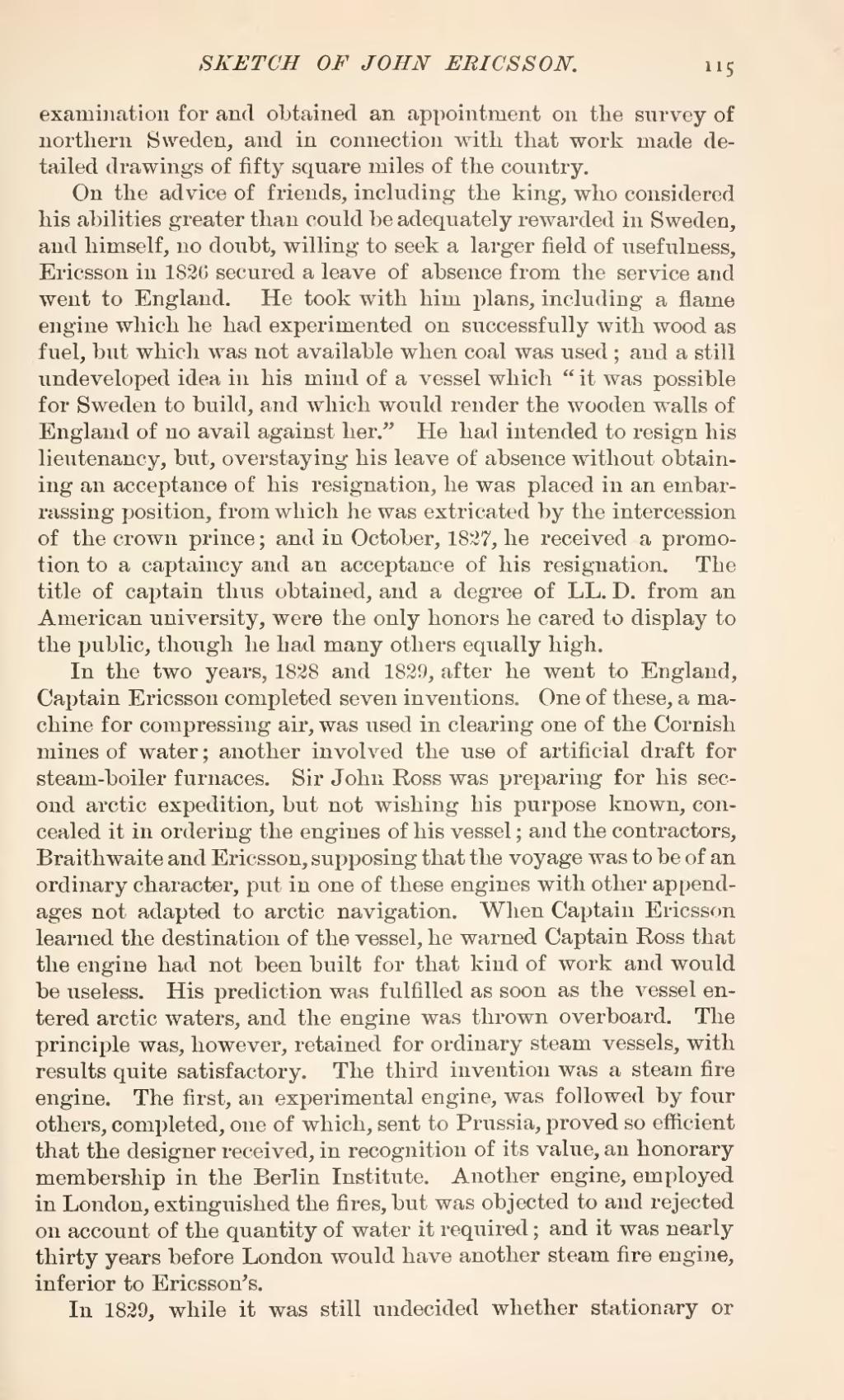examination for and obtained an appointment on the survey of northern Sweden, and in connection with that work made detailed drawings of fifty square miles of the country.
On the advice of friends, including the king, who considered his abilities greater than could be adequately rewarded in Sweden, and himself, no doubt, willing to seek a larger field of usefulness, Ericsson in 1826 secured a leave of absence from the service and went to England. He took with him plans, including a flame engine which he had experimented on successfully with wood as fuel, but which was not available when coal was used; and a still undeveloped idea in his mind of a vessel which “it was possible for Sweden to build, and which would render the wooden walls of England of no avail against her.” He had intended to resign his lieutenancy, but, overstaying his leave of absence without obtaining an acceptance of his resignation, he was placed in an embarrassing position, from which he was extricated by the intercession of the crown prince; and in October, 1827, he received a promotion to a captaincy and an acceptance of his resignation. The title of captain thus obtained, and a degree of LL. D. from an American university, were the only honors he cared to display to the public, though he had many others equally high.
In the two years, 1828 and 1829, after he went to England, Captain Ericsson completed seven inventions. One of these, a machine for compressing air, was used in clearing one of the Cornish mines of water; another involved the use of artificial draft for steam-boiler furnaces. Sir John Ross was preparing for his second arctic expedition, but not wishing his purpose known, concealed it in ordering the engines of his vessel; and the contractors, Braithwaite and Ericsson, supposing that the voyage was to be of an ordinary character, put in one of these engines with other appendages not adapted to arctic navigation. When Captain Ericsson learned the destination of the vessel, he warned Captain Ross that the engine had not been built for that kind of work and would be useless. His prediction was fulfilled as soon as the vessel entered arctic waters, and the engine was thrown overboard. The principle was, however, retained for ordinary steam vessels, with results quite satisfactory. The third invention was a steam fire engine. The first, an experimental engine, was followed by four others, completed, one of which, sent to Prussia, proved so efficient that the designer received, in recognition of its value, an honorary membership in the Berlin Institute. Another engine, employed in London, extinguished the fires, but was objected to and rejected on account of the quantity of water it required; and it was nearly thirty years before London would have another steam fire engine, inferior to Ericsson's.
In 1829, while it was still undecided whether stationary or

